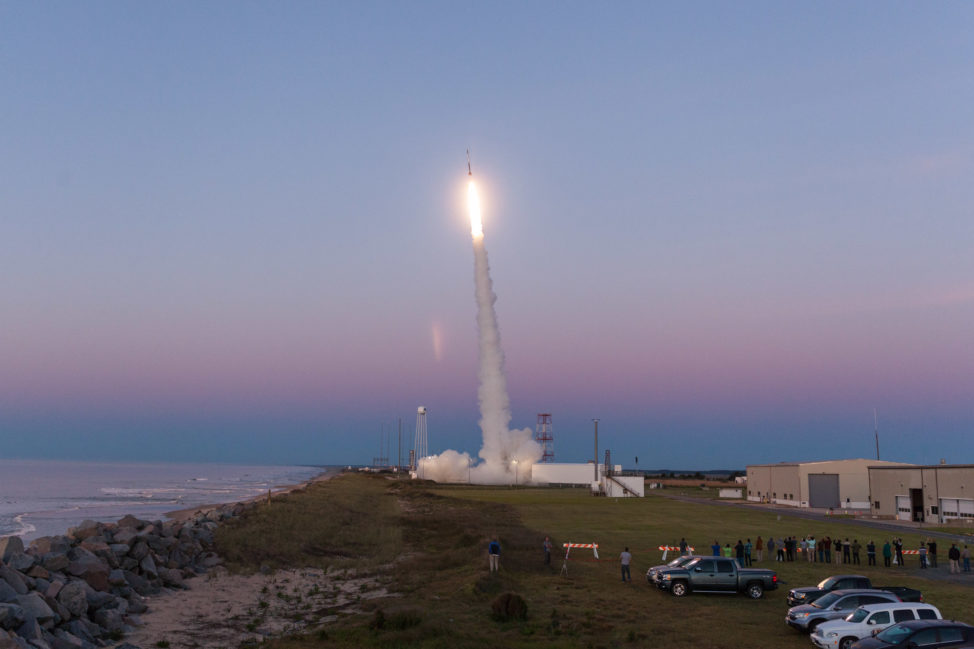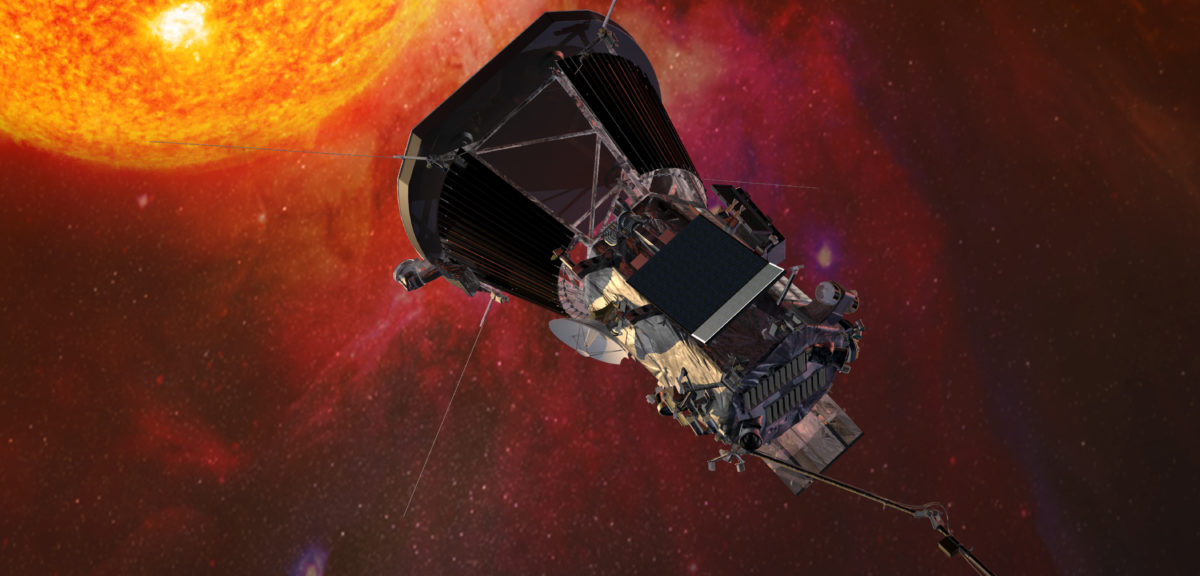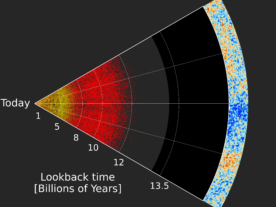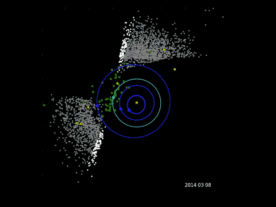
NASA’s Solar Dynamics Observatory (SDO) captured images of a partial solar eclipse in space on May 25 as the moon passed in front of the sun. NASA says the moon covered about 89 percent of the sun at the peak of the eclipse. (NASA’s Goddard Space Flight Center/SDO/Joy Ng)

Richard Browning of technology startup Gravity flies in his Iron Man-like jet suit called “Daedalus” at Henstridge airfield in Somerset, England on 5/25/17. (Reuters)

Astronaut Jack Fischer waves while attached to the International Space Station’s Destiny laboratory during a spacewalk with fellow Astronaut and ISS Expedition 51 Commander, Peggy Whitson on May 23. The two conducted the EVA to replace a failed data relay box and install a pair wireless antennas. (NASA)

Students from the Virginia Polytechnic Institute and State University, or Virginia Tech, watch the launch of a Black Brant IX sounding rocket with their Mars rover concepts aboard on May 16 from NASA’s Wallops Flight Facility in Virginia. (NASA/Allison Stancil).

On May 25, NASA released this image of Jupiter’s South Pole snapped by its Juno spacecraft from an altitude of 52,000 kilometers. Images taken by the spacecraft’s JunoCam on three separate passes were combined to show all areas in daylight. (NASA/JPL-Caltech/SwRI/MSSS/Betsy Asher Hall/Gervasio Robles)

The National Radio Astronomy Observatory (NRAO) released this artist’s conception of a newly-discovered secondary supermassive black hole orbiting the main, central supermassive black hole of galaxy Cygnus A on May 23. The discovery was made by scientists using the National Science Foundation’s Very Large Array or VLA in New Mexico. (Bill Saxton, NRAO/AUI/NSF)

French designer Gael Langevin stands behind the InMoov robot after he unveiled it May 26 at a technology fair in Bucharest, Romania. Langevin says the robot can be programmed to speak English, Spanish, French, Russian and Dutch, with a basic model costing about 1,500 euros. An entertainer seen standing on the left of the robot holds a sign that reads “The robots are among us”. (AP)

European Space Agency astronaut Thomas Pesquet Tweeted this photo of northern Europe he snapped from the International Space Station on May 9. Up in the top right corner, you can see an aurora. (ESA/NASA)

Images released by NASA on May 24 show how the color of Saturn’s North Pole region changed between June 2013 and April 2017. The space agency’s Cassini spacecraft grabbed the images as Saturn’s northern hemisphere headed toward summer solstice. (NASA/JPL-Caltech/SSI/Hampton Univ.)

NASA plans to send a spacecraft to within 6.5 million kilometers of the sun’s surface next summer. Here’s an artistic rendering of the Parker Solar Probe heading toward the Sun. On May 31, the spacecraft was named to honor astrophysics Eugene Parker who discovered the solar wind in 1958. (Johns Hopkins University Applied Physics Laboratory).
























Comments are closed.